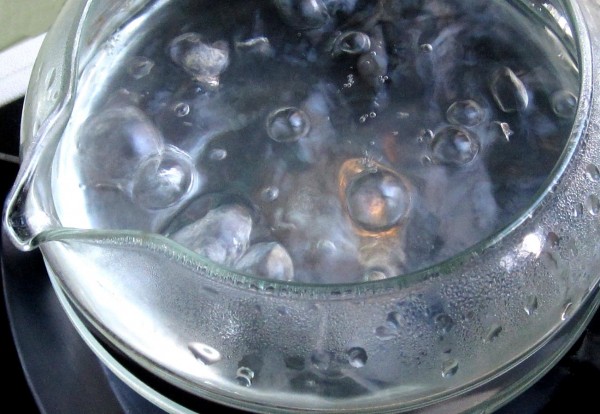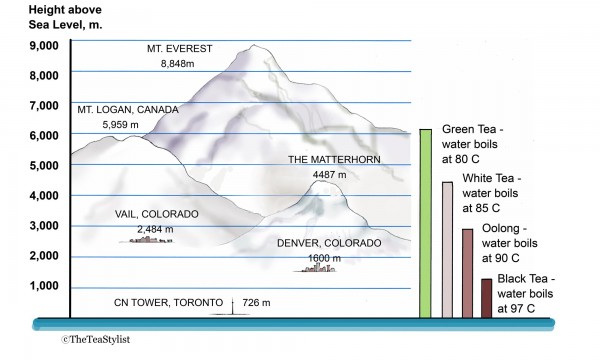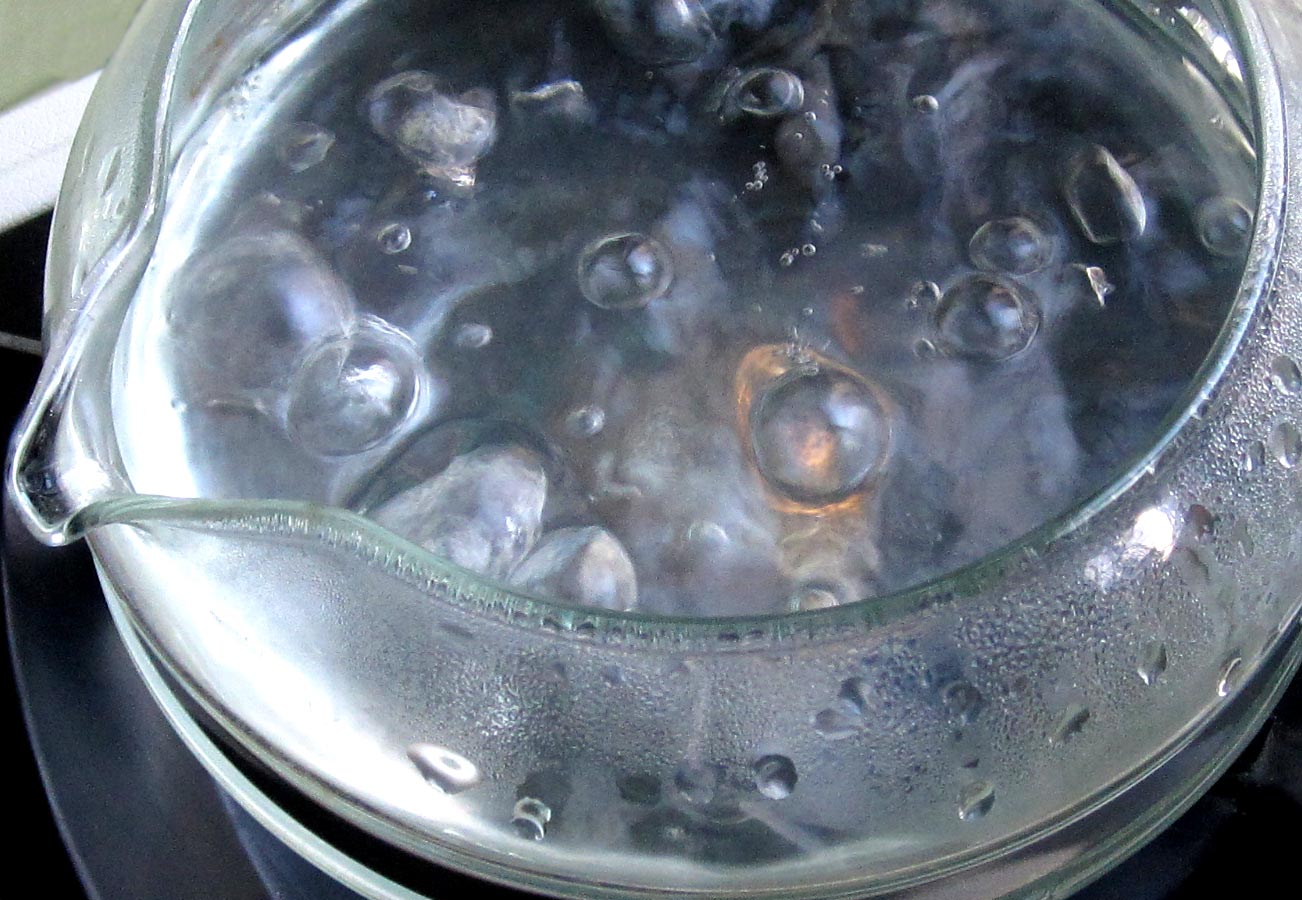Those of us who seek out specialty teas from the prime tea growing regions of the world, may obsess about the pH of water, its mineral content, chlorine levels, purity, etc. We want to give our precious leaves the optimum conditions for the release of their hidden taste treasures. With all this focus on the condition of our water we may be missing a very key factor, particularly in the preparation of black teas; ~ The water may have boiled, but did it actually reach the correct temperature?

Boiling Point definition: The temperature at which a liquid boils and turns to vapor. The boiling point for fresh water at Normal Temperature and Pressure (NTP) at Sea Level is 100°Celsius. We know that water can exist as a solid (ice), as a liquid or as gas (steam) and we know that when water reaches the temperature which we call “boiling point” it changes from liquid to gas – the liquid becomes steam. When the pressure drops as at high elevations, this transfer takes place at a lower temp. Aha!
In other words the temperature at which water boils depends on atmospheric pressure. As you go higher up the mountain, atmospheric pressure decreases, so water boils at a lower temperature. If you live above 1500m above sea level, you may not realize that boiling does not raise the water temperature sufficiently for infusing black tea leaves and drawing out their flavour. The fact that water is boiling/bubbling doesn’t mean that it is hot enough. At high elevations your water may have boiled/bubbled, but at too low a temperature to make a good cup of black tea. I commissioned the graph below to show you how boiling points/temperatures vary according to elevations worldwide.

We know that some of the best teas are grown at high elevations, so it’s interesting and somewhat ironic that a cup of black tea whose leaves were grown at the highest tea garden in Nepal at 2232m would not produce a good cup when infused at that level. You’d have to travel to the lower slopes to achieve the optimal cup.
If you live at sea level you needn’t worry. Your variable temperature kettle is probably telling the truth. If however, you live above 1300m, you will likely have a problem. Refer to the graph to determine the extent of your challenges and always use a thermometer to check your water temperatures. Here are some suggestions:
- You could dependably drink green tea. The highest mountain in the world where green tea can be prepared is Mt. Logan, Yukon, Canada where its peak is 5959 metres.
- Double your infusion time.
- Add another pinch of dry leaf per cup
- Another possible way to achieve correct temperature at high altitude is to use a pressure cooker, although most people don’t own one and imagine the hassle of hauling it out every time you want a cup of black tea.
None of these suggestions will produce an exemplary cup of black tea. My advice would be to add slightly more tea, to steep a bit longer and, well, lower your expectations.
Do you live at high altitudes? Have you found ways to beat the temperature challenges and still enjoy your darker teas? Please share your victories.
When using materials from this post, please credit theteastylist.com.



